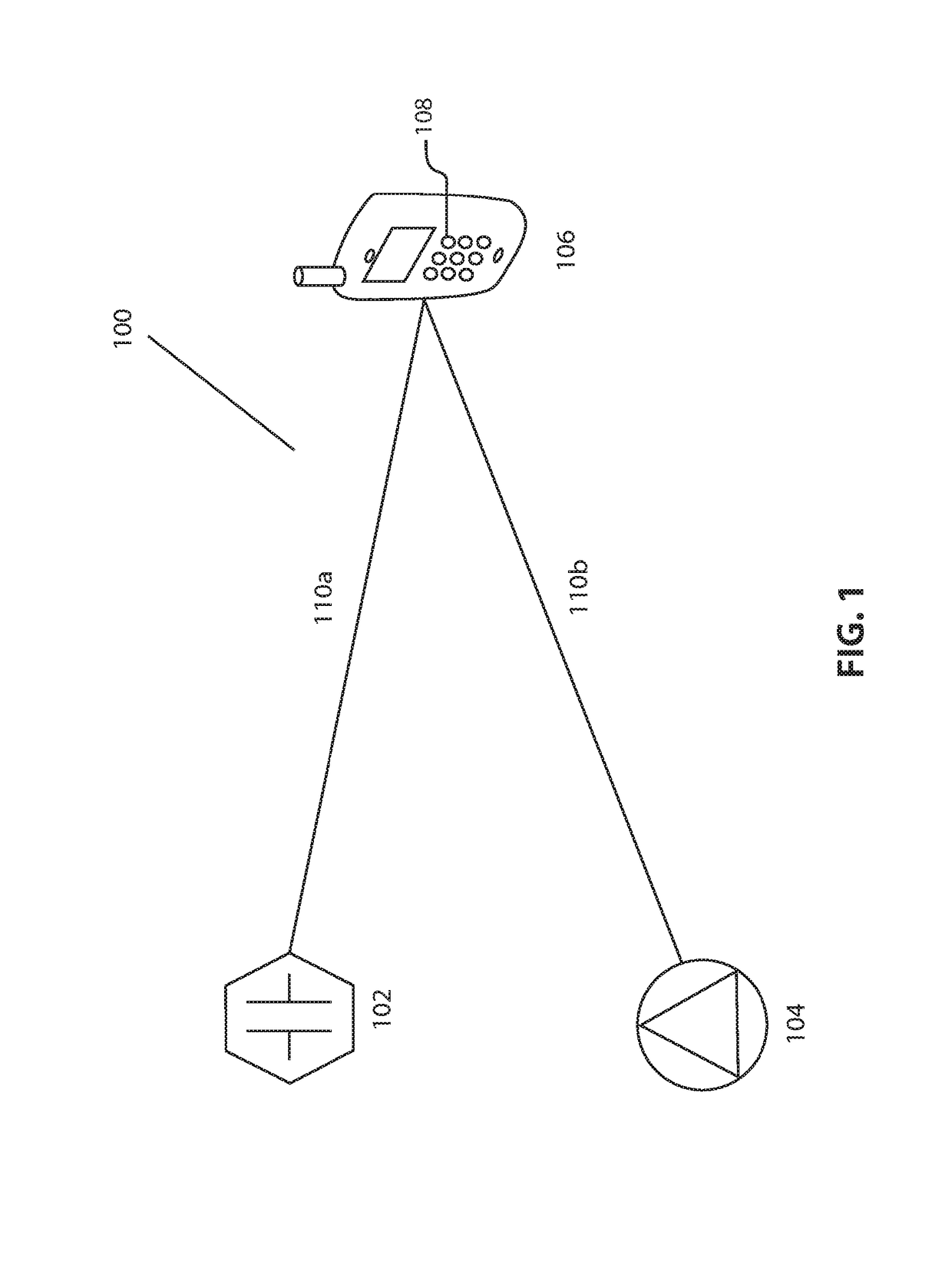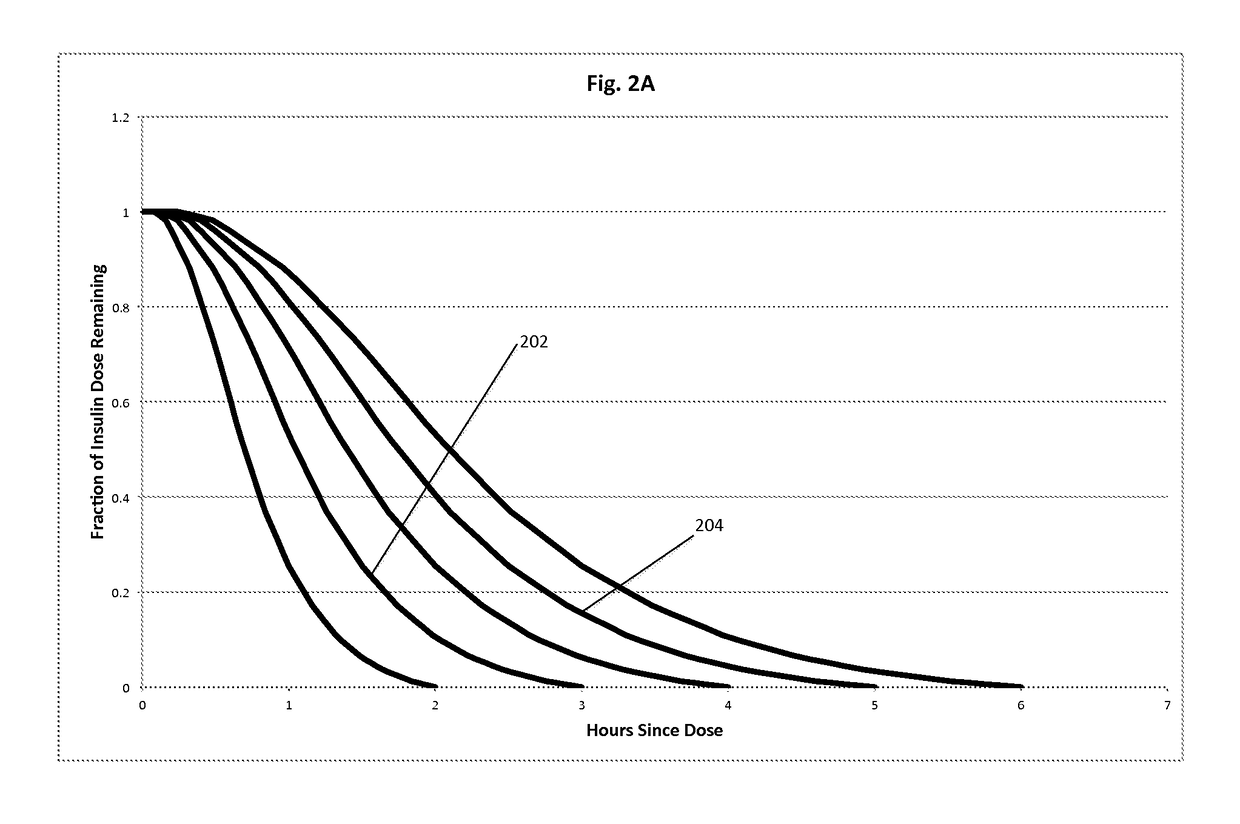Insulin on board calculation, schedule and delivery
a technology of insulin and insulin injection, applied in the field of delivery of insulin, can solve the problems of inability to provide risk of amputation of the extremity, and frequent injections that are inconvenient for patients, and achieve the effect of ensuring the proper absorption of sugar and starch, and reducing the risk of amputation
- Summary
- Abstract
- Description
- Claims
- Application Information
AI Technical Summary
Benefits of technology
Problems solved by technology
Method used
Image
Examples
Embodiment Construction
[0035]FIG. 1 is a schematic view of an exemplary system 100 adapted to implement one or more of the techniques disclosed herein.
[0036]The illustrated system 100 includes a glucose monitoring / measuring device 102, an insulin delivery device such as a pump 104 and a controller 106. The controller 106 has a user interface 108, an internal computer-based processor and internal computer-based memory storage capacity.
[0037]In the illustrated implementation, the glucose monitoring / measuring device 102, the insulin pump 104 and the controller 106 are configured so that they can communicate with each other using wireless communication channels 110a, 110b (e.g., using wireless communication technologies). However, in other implementations, information may be transferred between the components illustrated in FIG. 1 using a wired connection or may, in some instances, be transferred by the user or caregiver him or herself. For example, if the glucose measuring / monitoring device 102 is a monitor ...
PUM
 Login to View More
Login to View More Abstract
Description
Claims
Application Information
 Login to View More
Login to View More - R&D
- Intellectual Property
- Life Sciences
- Materials
- Tech Scout
- Unparalleled Data Quality
- Higher Quality Content
- 60% Fewer Hallucinations
Browse by: Latest US Patents, China's latest patents, Technical Efficacy Thesaurus, Application Domain, Technology Topic, Popular Technical Reports.
© 2025 PatSnap. All rights reserved.Legal|Privacy policy|Modern Slavery Act Transparency Statement|Sitemap|About US| Contact US: help@patsnap.com



